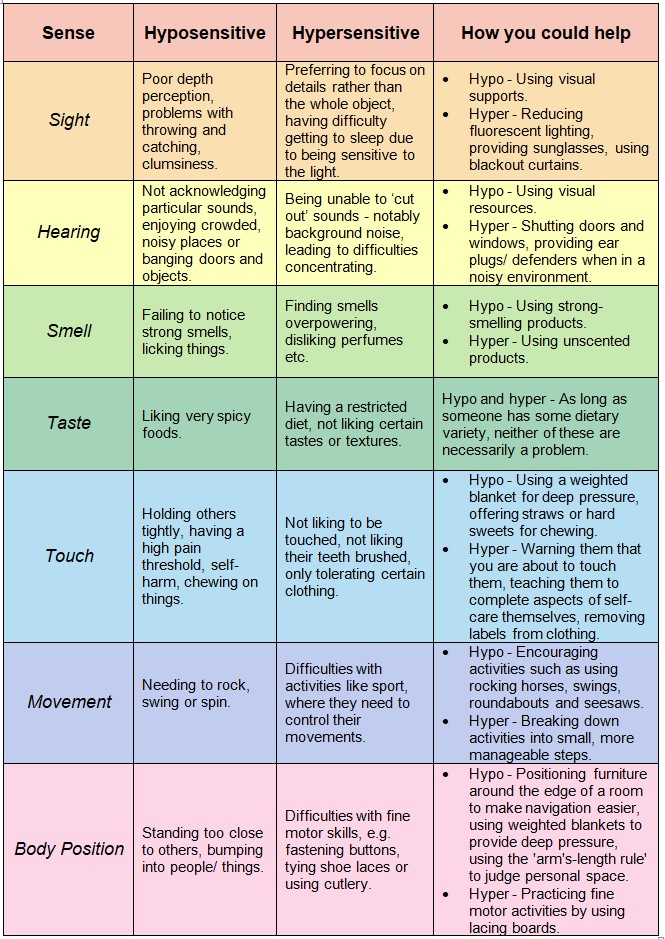Our bodies constantly receive, register and process information from our senses. The 5 main senses are:
- Sight
- Hearing
- Taste
- Touch
- Smell
There are 3 more senses that are also helpful to know about:
- Body Position – A sense of where parts of our body are in relation to one other and the environment.
- Movement – Tells us if we are moving, and, if so, in what direction and how fast.
- Internal Body Sense – Information about hunger, thirst, pain, illness, body temperature, if we need to sleep, use the toilet, changes in heart rate, breathing, alertness and feelings like ‘butterflies’ or a ‘sinking feeling’ when we experience strong emotions.
Children and young people with Autism Spectrum Disorder may be hypo or hyper sensitive to any of the above senses, or appear unusually interested in sensory aspects of their environment.
Here is a video depicting how it may feel for somebody with Autism who is hypersensitive to everyday sensory information:
WATCH: Autism and Sensory Sensitivity
Here are some of the things you may see if your child experiences hypersensitivity or hyposensitivity to sight, hearing, smell, taste, touch, movement or body position, and how you could help:
